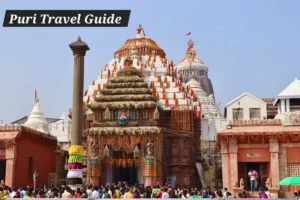Exploring Khajuraho – Temples Sculptures, Art and History
Khajuraho Temple Sculptures:
Khajuraho is a small town in Madhya Pradesh that occupies an important status in India’s cultural and architectural history. The town is renowned worldwide for its group of ancient temples, rich with carvings and sculptures.
Khajuraho is a UNESCO World Heritage Site. It attracts history lovers, art lovers, spiritual enthusiasts, and explorers from around the world, and while it is best know for its erotic sculptures, the temples of Khajuraho depict a picture wider than the erotic; it offers an inkling into Indian society and its belief systems, and an example of Indian architectural and artistic excellence of yore.
Where is Khajuraho located
Khajuraho is situated in the Chhatarpur district of Madhya Pradesh. It is well-connected by road, and has a small airport as well, catering to domestic and international tourists. Jhansi and Satna are the two nearest relatively large cities, with trains continuing accessibility.
History of Khajuraho
The temples of Khajuraho were built between 9th – 12th centuries by the Chandela rulers. At this time, the Chandelas were the rulers of central India, and were known for their patronage of art, architecture and culture. Originally, there were approximately 85 temples built, however today, only 20 or so are still in good condition.
Over the centuries, many temples were destroyed or fell into disrepair due to wars, looters and other forces of nature. The temples of Khajuraho, which were built between 950 and 1050 AD, were “rediscovered” during the British colonial period in the 19th century. Khajuraho became known to have historical and artistic significance. Here’s how:
What is the reason Khajuraho is renowned:
The name Khajuraho has become synonymous with temples and detailed sandstone sculpted reliefs. The reliefs are unique in their storytelling. There is an incredible array of carvings depicting every day life, divine beings, musicians, dancers, animals and even couples in romantic situations. The highlight of the sculptures and carvings, and most talked about, of course are the erotic sculptures, however they represent only a tiny fraction of the art, and the ostensible balance of the spiritual and worldly life are key deeper meanings.
Three Group of Temples
Khajuraho’s Group of temples include three major groups, called eastern group, northern group, and western group.
1. Eastern group of temples: The eastern group of temples comprises some Jain and Hindu temples. The Jain temples including temples of Parsvanath and Adinath temples are known for their simplicity and elegance. The Ghantai Temple and Brahma Temple are also in this group.
2. Western group of temples: The western group of temples is the most visited by tourists, and contains the largest and most renown temples. The Kandariya Mahadev Temple, the most reputed temple is in this group. An enormous visage with incredible carvings all over its surface. The Lakshmana Temple and Vishwanath Temple are also essential temples in this group. The temples of Khajuraho represent two major traditions of Hinduism; Shaiva and Vaishnava.
Khajuraho Temple Sculptures and symbolism
Sculptures in Khajuraho are not just about bodily perfection. They portray life as a whole. You will see images of gods, celestial beings, warriors, common people, and animals all depicted on temple walls. All of which represents the philosophy of engaging with life fully (pleasure, duty, spiritual learning, and freedom).
While the erotic sculptures in Khajuraho can, at times, raise eyebrows. Some say they were simply educational, teaching people about human relationships and desires. Others say they were symbolic of the union of soul and divine.
Regardless of the reasoning all of the erotic carvings are always on the outer wall of temples, because they were always intended to represent the ‘outer’ life of the temple as opposed to the ‘inner’ life of the temple, which is always pure and spiritual. The physical, the journey of life to spiritual life.
Best Time To Visit
The optimum season to travel to Khajuraho is in the winter months of October to March. The climate is comfortable and visiting the temples during the day is feasible. The summer months are hot and dry, therefore sightseeing is rather difficult.
Another exceptional time to visit Khajuraho is during the Khajuraho Dance Festival – which occurs in February or March every year. This cultural festival celebrates classical Indian dance, including the Kathak, Bharatnatyam, Odissi, and many others, that are performed against the backdrop of the beautifully illuminated temples. It adds an enchanting experience to your trip.
How to get to Khajuraho
By air: Khajuraho has a small domestic airport that connects to cities such as Delhi and Varanasi.
By train: The nearest main railway stations are Jhansi, (175 km), Satna, (120 km), and Mahoba (75 km). You can take a cab or bus from there.
By road: Khajuraho is a well-connected town by road and can be reached by private taxi or buses from other places in Madhya Pradesh and Uttar Pradesh.
Things to do other than temples
Although temples are the top attractions, there are other places to explore nearby:
1. Raneh Falls: A stunning natural waterfall approximately 20 km away from Khajuraho. The waterfall is located in a canyon of colourfully layered granite rocks.
2. Ken Gharial Sanctuary: Not far away from Raneh Falls, this sanctuary is where you’ll find the endangered gharial crocodile. It provides a serene natural atmosphere to enjoy.
3. Light and Sound Show: Every evening, there’s a light and sound show at the Western group of temples. The light up the evening with some story of Khajuraho, with some beautiful lights and music.
4. Shopping: Markets in Khajuraho offer traditional stone carvings, tribal jewelry, handicrafts, and textiles that you can take home as souvenirs.
Respecting the culture
When you’re in temples, follow the hospitality of our heritage: dress respectfully, behave respectfully. Most places allow photos but avoid touching sculptures and stepping up on platforms. Being a religious and historical site, it is expected that visitors show cultural sensitivity.
Conclusion
Khajuraho is more than just a place with ancient temples. It is a journey into India’s artistic and spiritual soul. The beauty of the carvings, the richness of the stories, and the peaceful atmosphere make it a unique destination. Whether you are a traveler interested in architecture, a student of history, or someone seeking a soulful experience, Khajuraho offers something memorable. Visiting this place is like turning the pages of a living history book, one sculpture at a time.
Frequently asked questions
Where is Khajuraho Temple located?
Khajuraho Temple is located in Chhatarpur district of Madhya Pradesh, India.
Why is Khajuraho Temple famous?
Khajuraho is renowned for its intricate and artistic sculptures that depict various aspects of life, love, and spirituality. It is also a UNESCO World Heritage Site.
How many temples are there in Khajuraho?
Originally, there were around 85 temples, but currently, about 25 temples have survived and are preserved.
Yes, Indian citizens need to pay a nominal fee (usually around ₹40), while foreign tourists have a slightly higher fee. Entry is free for children below 15 years.





